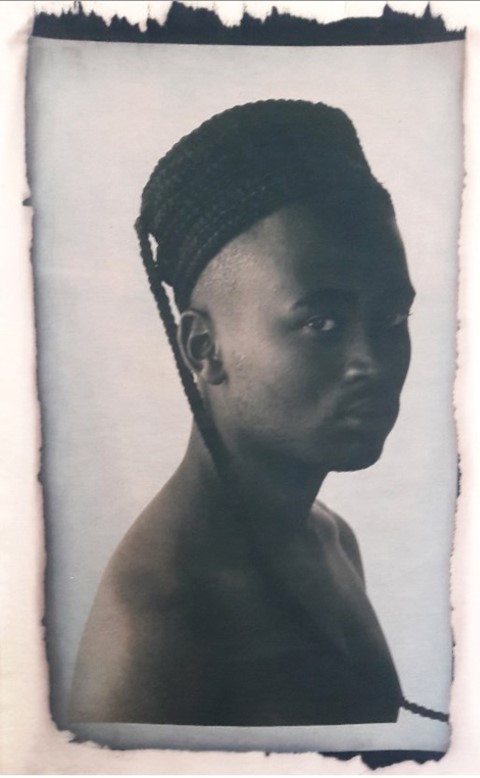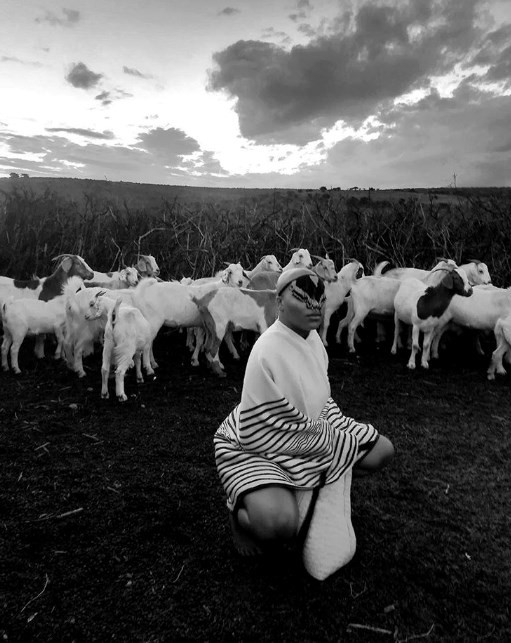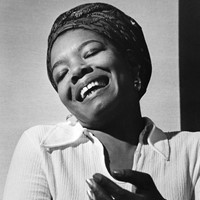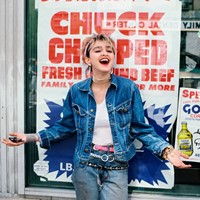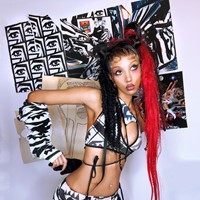We meet a handful of the artists pushing the city’s scene forward and ensuring their stories are told right
As African contemporary art draws focus in London this week at 1-54 Contemporary African Art Fair, it marks an ideal chance to see a diverse representation of the thriving art scene. The art scene in Johannesburg has been gaining a lot of traction, as well as MOCAA opening in Cape Town last year becoming the largest contemporary art museum in Africa.
At the same time, large institutions and art fairs have the capability to freeze and/or canonise art into a singular central perspective (usually white and male). Still, only a small portion of artists and galleries participating in fairs and museum shows are African based. Of the 43 international galleries participating in 1-54, 16 are African-based, with less than ten of over 100 galleries being African-based in this year's Frieze London. If this is the case then how much of a true reflection are we getting of African artists and their work when so much is being represented by Northern Americans and Europeans, and placed in an alternate context? How much do African-based artists, curators, gallerists, and art students see the interest in African contemporary art filter back into their communities?
Johannesburg, in particular, has become a city known for its thriving art scene. Galleries and project spaces are popping up in areas such as Braamfontein, Maboneng, and Arts on Main. Artist studios such as The Bag Factory and August House provide space for diverse communities of emerging and established artists. FADA Gallery, based at Johannesburg University, and the Fine Arts course have become a progressive force to be reckoned with, with overseas recognition from Autograph ABP and YBA Yinka Shonibare MBE. As the Johannesburg art scene grows, so does a generation of young people who want to change the direction of art history in South Africa.
We speak to four Johannesburg-based emerging artists deconstructing issues of colonialism, economic inequality, gender, and identity, who represent a young and aware generation of African artists across the continent. These artists are occupying institutional spaces and generating dialogues about what it really means to be living in South Africa, how to navigate the art world as a young black South African, and why Johannesburg is such an interesting place to start that journey. It feels important now more than ever to give space to artists operating outside of the art bubble we are so accustomed to that doesn’t have the imperial white male narrative at its centre.
CHARLES MAMOROBELA
Originating from Alberton, East Johannesburg, Charles Mamorobela is a native of the city who uses the chaotic energy of Joburg’s streets as a driving force in his work. Starting out as a graphic designer, Mamorobela was drawn to advertising language used to sell a reality starkly different from the one the city is facing. A raw consciousness in Mamorobela practice allows him to create bold tableaus depicting social issues facing the city, whilst also paying homage to the everyday people that make Johannesburg the magnetic place that it is.
Charles Mamorobela: Over the past three years I’ve been using my practice to talk about social issues affecting Johannesburg. When most people think about art, they think of something prestigious, something valuable kept in a museum. I try to make work that impacts you the way news and media are so easily consumed, but by deconstructing social issues affecting us now. From the social grant system affecting the elderly, Eskom’s environmental issues, taxi violence, gender violence – it’s happening all around town. The work is about showing peoples lives from a raw, real point of view. It might not be nice but you’ve got to understand it to understand Johannesburg.
“I try to make work that impacts you the way news and media are so easily consumed, but by deconstructing social issues affecting us now” – Charles Mamorobela
After 1994, we all started from the bottom as the black society in South Africa. There are still townships and ghettos, 25 years later we’re trying to progress. I was born in 1992, grew up in the suburbs, next to Indian people, white people, all different cultures. I never grew up knowing there were things I wasn’t allowed to do as a black South African. My parents went through that situation more, but you learn through your home and your parents. There is not a lot of racial hostility amongst the youth here, it is more apparent among older generations.
Cultural and racial differences do affect how the work of young black South African artists is understood by those who grew up in another time. As an artist, you find a language that can reach people from different perspectives so conversations arise and can create change. The people going through the situations depicted in my work are our parents, aunties, teachers. I try to speak to everyone.
Art is not just for Europeans or white South Africans, it should be for everyone. We need more black South Africans running galleries, showing other black South Africans work. We must create a balance – when you think of galleries now you still think of wealthy white people and I want to change that. It takes a long time but its important you know?
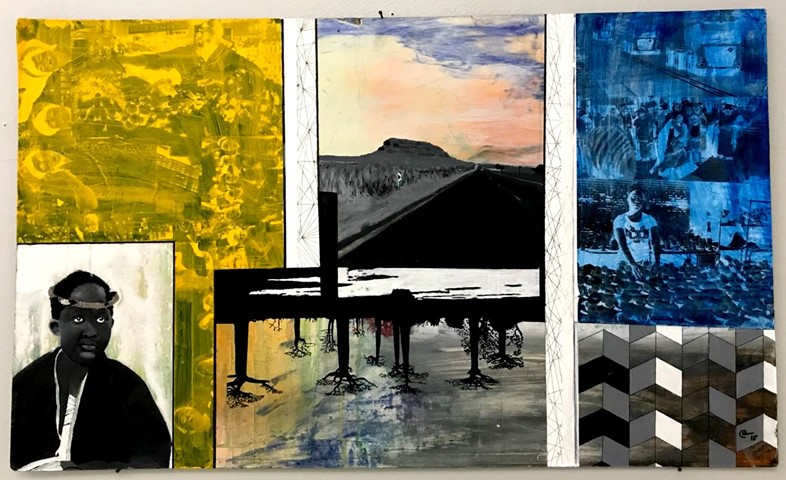
DIMAKATSO MATHOPA
Dimakatso Mathopa originates from Pretoria, 60 kms north of Johannesburg. After the passing of her mother, Mathopa found difficulty in moving forward with her practice and spent much of her time in the company of her grandmother. It was a conversation between them that sparked her current series of work reimagining the history of the black subject.
Dimakatso Mathopa: My grandmother told me the story of how my grandfather inherited land from a white man during apartheid in the mid-80s. The white man didn’t know much about the area of Free State, so my grandfather was the one that would help him and take care of the land. He grew very fond of my grandfather and when he relocated to the Netherlands he gave my grandfather the land as a gift.
That household was so colonial, my grandmother told me how she felt she did not fit in that space. As a black woman at that time, it was foreign to have such a lot of land and occupy such a colonial setting. Yet, she was forced to be the matriarch of that household.
My grandmother’s battle with occupying space related to my interest in how the black subject has been historically portrayed in art, society, and media. Colonialism and imperialism are the reasons why black people were perceived in a certain way. Looking at women from a historical context, such as Saartije Baartman, and how she was subjected to becoming an object on display – simply because her physique was different from European women. I want to subvert the historical narrative of black subjects and objects in my work in the context of contemporary society.
I began visiting a historical colonial open house in Oakland Park as the setting for my work. I went into that space alone and occupied it to the fullest. I had to put on the persona of my grandmother and my late mother, while at the same time subverting their personas by making myself look as if I really was the matriarch of that space.
“I want to subvert the historical narrative of black subjects and objects in my work in the context of contemporary society” – Dimakatso Mathopa
In my prints, you’ll see I’m not fully dressed in most of them, simply because I am in a space where I am comfortable. I’m dressing up and doing hand gestures to show a sense of movement. I had to perform as the matriarch, the black matriarch of a colonial space. I showed my grandmother and she said: “I wish I looked and felt the way you do in your artworks”.
I use cyanotype as it gives me the ability to manipulate colour and age my work. However, you also get a sense that it is not an old image because the garments I have designed are made out of Shweshwe cloth. I am a South Sutu woman, we make our clothes with shweshwe cloth which was inherited from the Dutch settlers when Jan van Riebeeck arrived in South Africa. These subtle elements imply this is not just any black woman this is a Hutu woman. It’s not a huge statement because most people don’t pick that up, but some people do realise it's made out of shweshwe cloth, and then figure out I’m Sutu.
We need to look into black women and the issues they deal with, class, misogyny, occupying spaces, and racism. If my grandmother, late mother, and myself are still dealing with the same issues, it’s still going to take time for black women in South Africa to have an elevated voice, integrity, and identity.
We have so many stories to tell, we’re the generation and the aftermath of colonialism, and a generation that race, culture, and gender issues still affect. We are continuously grappling with these issues, not just in our personal lives but also the institutions that we occupy.
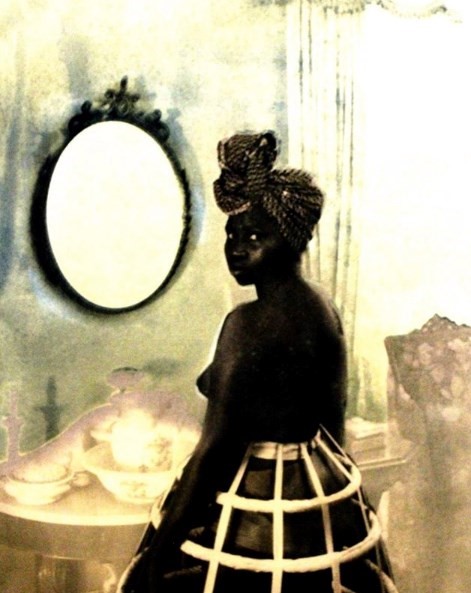
ZENANDE MKETENI
Zenande Mketeni originates from King Williams Town in the Eastern Cape. In the 1950s, Mketeni’s family became displaced after they were forced to move from their land by white settlers. Through photography, performance and printmaking, Mketeni explores spiritual disposition and the relationship with her culture as an Xhosa woman growing up in the city. Mketeni and a group of girlfriends use the hashtag #BlackGirlMagicInArtSchool to document their experiences as young black women occupying art institutions in South Africa.
Zenande Mketeni: I’m looking at the portals of culture in 2018; why are we still slaughtering cows? Why do we still practice these traditions at a time where they could very much conflict with life now? As technology moves forward so rapidly, why have these rituals not changed? I'm interested in why they are so embedded within us and where they come from. Our history has always been documented from the outside, the colonial practice of explorers coming and taking pictures of us. So now, when I go home and take part in cultural practices, I’m taking pictures of those scenarios that you wouldn’t see, nor be allowed to be a part of, from a personal rather than colonial or fetishised perspective.
I grew up in the city but I’ve always had a longing to understand my culture to the fullest. I will know my culture, especially because some people don’t even have the pleasure of living on their cultural land. I’m always thinking about the further you go, how much of your culture do you take and how important is it to return to this identity?
I went back home to be part of a ceremony where we were fetching the spirits of our family from the land my family were removed from. It was two days long and spiritually intensive. It was really interesting to see the significance of all the women involved, from the women preparing the ceremony, cooking, the healers, and how pinnacle they were to the whole event. I keep returning to that experience. There are always these hidden figures and strong women, I want to start unearthing them and their stories. The ceremony also made me think about never seeing ancestors visually. The dopest thing about art is that you can make something that doesn’t exist, exist physically. I created my own deity and use her to connect this feeling of protection and spirituality I carry with me, finally giving it a being with this work.
“The further you go, how much of your culture do you take and how important is it to return to this identity?” – Zenande Mketeni
It’s also about seeing your own art too. I’m Xhosa, a lot of our art has been put in museums and it’s gone. So it’s a lot about recreating our own art so that in the next 50 years, someone can identify my work as coming from an Xhosa artist. These are my people, they exist. A lot of my ideas come from folklore and giving them a modern context and the importance of language carrying culture and teaching people that we must keep it going.
For a long time, everyone was doing what the west was doing, dressing how the west was dressing, and then we started wearing our doeks outside, instead of wearing them only for traditional occasions. It’s all about decolonising our own cultures and not being embarrassed. Artists and musicians are expressing where they are from and wearing their traditional garments and mixing them with Nikes. It’s interesting now when you look at images from the 1800s and then look at how people are owning their culture now with things like afro-futurism. There is a constant pulling and pushing, and that's why it’s so exciting to be a young South African in 2018. I think we’re reshaping how we view our culture.
In school, we never learned about black artists, they weren't in textbooks. Art school is important in the sense that I wish it could trickle down so far to people in high school or kids in primary school who have learnt about Picasso before they’ve even learnt about Dumile Feni or Gladys Mgudlandlu – artists that come from their towns or townships. Or even just learning about black artists in conjunction with the west. By the time you get to university, all these people you idealised came from the west and there were people here doing amazing things in art. We need to teach these kids!
There’s a whole African renaissance happening and Johannesburg is booming. South Africa is the most interesting country in the southern hemisphere right now. Being in Joburg is the best thing you can do for yourself as an artist – it’s electric. If you want to be a self-aware South African artist, being in Joburg is what changes you.
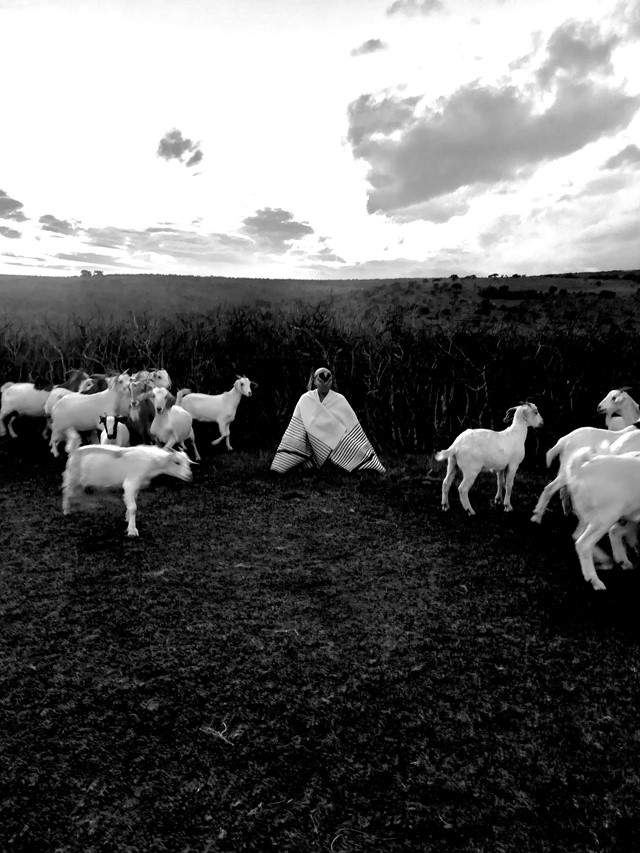
NONKULULEKO SIBANDE
Nonkululeko Sibande identifies as a visual activist. Growing up in Meyerton in South Africa’s Vaal Triangle, she was supported by a strong band of female figures. Sibande’s aunts set up a hair salon in the family’s front garden as a source of income while her father was in exile in the 90s. Sibande’s artistic endeavours stem from her relationship with her aunts and the importance of hair not only as a source of income but as an intergenerational, identity-affirming ritual, that binds together communities of black women, using synthetic hair as both subject and material.
Nonkululeko Sibande: In my work, I am trying to reference how the hair was interpreted in history, but also to challenge how black hair is being presented in society today. There’s so much history behind braiding, it’s not a fashion trend set by Kylie Jenner. Conceptually, I want the work to build an awareness about the representation of black women as a record for future generations, while also expanding the bountiful actualities of African women by critiquing beauty ideals defined by western standards.
The issue of race and identity is common in South African history and has opened space for a lot of conversations. There were a lot of riots around high schools and private schools where black girls were asked to straighten their hair or stop coming to school. A young black girl was told her afro was a disturbance in class, so either she would straighten her hair or be expelled. It's quite funny because your hair has nothing to do with the reason why you’re at school, you’re there to learn, why would you be looking at my hair – it doesn’t speak to you, it’s silent, it’s a part of me. When I was in school, we were told to braid your hair to be “neat and contained” or you can go to the township school. It’s a whole issue of teachers “othering” these kids by telling them they cannot be taught in their natural state. For young black girls, hair is not just something to play with, it is something that is laden with messages, and it has the power to dictate how others treat you, and, in turn, how you feel about yourself.
“It’s a whole issue of teachers ‘othering’ these kids by telling them they cannot be taught in their natural state. For young black girls, hair is not just something to play with, it is something that is laden with messages” – Nonkululeko Sibande
Reconsidering gender roles is also important in my work, so both men and women are part of my work in order to deconstruct issues of marital status, age, wealth, and rank on the social hierarchy within a community or tribe. Within African cultures, there are some communities where it's not encouraged for men to grow their hair long, so in some images, you will see that being challenged. Coming from a traditional Zulu background there are a whole lot of connotations around women who have hair on show. The majority of the women in my family usually wear head wraps and it’s required once you’re married. There are a whole lot of boundaries when it comes to the idea of being free because culture and beliefs come into play – there’s quite a thin line.
Some people may view my work and question the nudity, but what more than to be confronted by something in it’s most bare and vulnerable state? My work plays on the colonial imagery of the black body and tries to reposition that gaze in relation to the issues I’m addressing regarding hair. I want to question the viewers' entitlement to an image when the image is baring all of another person's identity.
